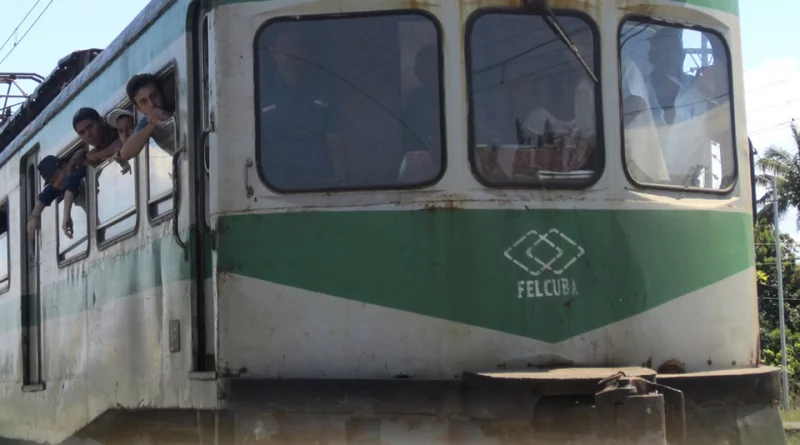
Cuba’s Sugar Trains
In this episode, host Ian Wright goes on an eye-opening and hair-raising train journey across the Caribbean island of Cuba. The Communist country’s railway network is dilapidated and very unreliable, but it’s a fantastically enjoyable trip.
Surprisingly, Cuba was one of the first countries in the world to build a railway, starting all the way back in 1837. At the time, Cuba was the world’s largest sugar producer, and its early railways were designed not with passengers mainly in mind, but to transport sugarcane to the mills, and refined sugar to the ports.
On a day trip out of the capital Havana, Ian takes a ride on the historic Hershey line, Cuba’s only electrified railway, built in the 1920’s by the famous American chocolate manufacturer to facilitate exports from the huge Hershey sugar mill. The highlight of the trip is the opportunity to drive the train, which Ian jumps at.
Ian travels on from Havana to the provincial city of Santa Clara, on a long distance train that averages just 30 miles per hour. The train breaks down en route, and remains stationary for an incredible six hours, before it is finally fixed. Cuban passengers are relaxed about the delay, however – they’re used to it, and know how hard it is to get spare parts as a result of the USA’s economic embargo.
In Santa Clara, Ian visits the site of the famous battle in 1958, fought by rebels commanded by Che Guevara. Carriages of an armoured train sent by the hated dictator General Batista are preserved by the track, where they were derailed by the rebels in a successful act of sabotage that helped win the Revolution.
On the short trip from Santa Clara to the neighbouring province of Cienfuegos, Ian again jumps at the chance to drive the intercity train. In addition he takes a breathtaking and hair-raising open-air ride right at the front of the locomotive.
Just outside the provincial capital of Cienfuegos, Ian visits a working sugar mill to see how dilapidated old 1970s-era Soviet locomotives are used to bring in the sugarcane from the fields. Remarkably, the narrow gauge railway line on which the trains run hasn’t been replaced since the 1880s, when the line was first built, and all too often loaded sugarcane wagons derail and topple off the wobbly track.
Ian travels on to the historic city of Trinidad by car, as the railway line to the city hasn’t been fixed since a hurricane destroyed a bridge over 20 years ago. Founded more than 500 years ago, Trinidad became rich on sugar and slavery, and today is a wonderfully well-preserved UNESCO World Heritage Site. Ian takes a ride on the tourist train that now runs on the line that used to transport refined sugar to the local port. Happily for Ian, there’s a bar on board the train, and he enjoys plenty of Cuba’s famous rum cocktails en route to the valley of sugar mills that made Trinidad rich. On the return journey the train is delayed by maintenance work on a badly decaying bridge, but overall it’s a spectacularly scenic and very enjoyable journey.
Travelling on to the small town of Moron, Ian visits the train maintenance depot where Cuba’s entire fleet of pre-Revolution 1950s US-built diesel locomotives are serviced and repaired. Despite a lack of spare parts as a result of the US embargo, the mechanics manage to keep the trains going by making replacement parts themselves.
From Moron, Ian travels to the nearby city of Ciego de Avila on a railway that, uniquely in Cuba, was built not for the sugar industry, but for military reasons. The La Trocha line was built by the Spanish in the 1870s, during Cuba’s Wars of Independence, to try to hold back advancing rebel forces. Ian sees how the supposedly impregnable line of defence failed, and Cuba won its Independence.
Ian’s final train journey in Cuba is the most exciting of all. Until as recently as 15 years ago, many of Cuba’s sugar mills used steam trains to bring in sugarcane. Ian takes a spectacular and thrilling ride through sugarcane fields on the front of a beautifully preserved 1920-era US-built steam locomotive. Despite all the difficulties of travelling by train in Cuba, from start to finish it’s been a fantastic and wonderfully enjoyable trip.
Credits
*
fixers
WILLIAM RAKIP
AHMED PLASENCEA
ALBERTO LAHENS
*
